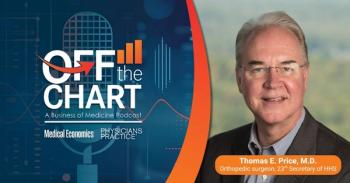
Quality Healthcare, Error Prevention Make for the Best Outcomes
Quality care and error prevention are the very most important things that we do day-to-day.
A couple of Fridays ago, our surgical team got a wakeup call reminding us of the perils of the OR. I used to joke when I was a mobile intensive care paramedic that my job was hours of boredom, interlaced with seconds of sheer terror - yet this seems to closely define any OR.
To the credit of all the people on the team who make the OR go, we have an excellent safety record. It is easy to expect things to go right, but the team must always remain vigilant to the dangers of the OR despite long periods of normality.
We were finishing up a "routine" reconstructive burn surgery on a two year old, who we had operated on twice before without problems or complication. This time, as he was emerging from anesthesia, he went into a severe laryngospasm and required emergent endotracheal intubation and pharmacotherapeutics.
I'm relieved to report that we successfully extubated the patient and admitted him to the burn unit for overnight observation. He recovered fully, without problems. In the hospital, as well as the OR, bad stuff happens, even when we do everything right.
In the event of emergencies, those tense moments of crisis can be managed by thinking systematically, and working through checklists - much like aircraft pilots.
I read a great book two years ago, The Checklist Manifesto: How to Get things Right, by Dr. Atul Gawande, who studied other professions that had to manage hours of boredom interlaced with seconds of heightened action, like airline pilots.
A checklist is crucial to safety before takeoff and to manage in-flight emergencies. Pilots - like physicians, PAs, and other healthcare providers - learn to manage problems in a stepwise, consistent fashion through experience. Gawande takes this a step further by recommending a physical checklist in the OR. He was able to show conclusively that simple, short checklists in the OR dramatically reduced operative morbidity and mortality.
I'm happy to report that, in our facility, we are very systematic in our approach to the OR, and we don't allow easy deviation from the "checklist" preoperatively, intraoperatively, and postoperatively. Procedures can seem monotonous at times, and even burdensome when taken to extremes. But experience has shown us all that by constantly reviewing checklists, knowing them thoroughly and using them, can save lives.
Using checklists, we can reduce the number of preventable deaths.
A Department of Health and Human Services report in 2010 stated that one in seven Medicare patients will suffer a serious inpatient medical mishap each year, and 180,000 patients die from those mishaps annually. Of those fatalities, roughly 80,000 deaths are believed to be caused by preventable errors.
The additional medical care required to correct these mistakes costs taxpayers and the healthcare system more than $4 billion a year. This is but one slice of the healthcare pie, and it is easy to extrapolate the impact of errors to all that we do in the healthcare system.
This reality has forced a change in how we practice in medicine. The push for the electronic health record, computerized physician order entry, intelligent computerized drug dosage, and interaction checks have helped reduce errors, but we cannot remove the human element from the practice of medicine - nor should we!
It turns out that the simplest solutions sometimes have the greatest results.
Those of us who work on medical staff committees know that quality care has financial implications, and complications have negative financial implications related to infection, readmissions and more. This is the world in which we live.
However, the best reason to take these issues seriously can be found in the teary eyes of the parents of our two year old patient after we were out of the woods and the patient was awake, breathing on his own and alert. What a relief to the surgical team and everyone involved in the care of burn patients in our unit.
Quality care and error prevention are the very most important things that we do day-to-day. I was grateful to have this fact reinforced without loss of life, or short- or long- term complication.
Find out more about Stephen Hanson and our other
This blog was provided in partnership with the American Academy of Physician Assistants. For more information, visit
Newsletter
Optimize your practice with the Physicians Practice newsletter, offering management pearls, leadership tips, and business strategies tailored for practice administrators and physicians of any specialty.










